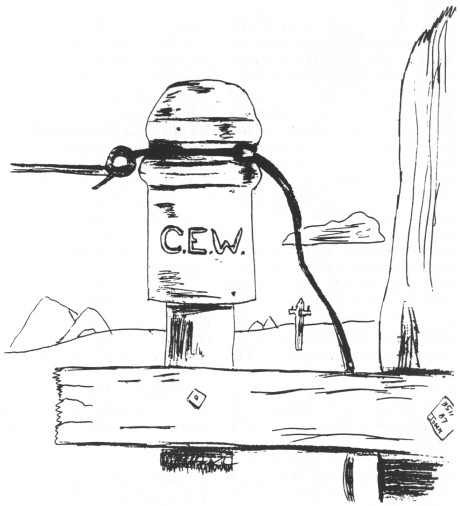Yellow California Insulators
by Dwayne Anthony
Reprinted from "Crown Jewels of the Wire", April 1989, page 10
I have noticed that within the 3 years I've been in this hobby, there seems
to be a great deal of unsettled controversy over the authenticity of the YELLOW
California insulators.
We all know the purples can be "cooked" to
achieve the color yellow, but are there really any authentic, uncooked yellow
Californias in existence? I have read reports in the early issues of CROWN
JEWELS that yellows were actually found in use on occasion.
Hoping to find an
answer to this question, I began to do a little experimenting with a smokey
purple CD 162 California. First, I heated the insulator, bringing about the
change from purple to yellow. Then wondering if I could reverse the process in a
speedy manner, I then placed the yellow insulator in a "purpling box"
(used by bottle collectors to rapidly turn clear bottles containing manganese to
purple). Thinking a 48 hour exposure would be sufficient time to cause some
change, I then removed it from the box. To my dismay, there was no change.
Realizing my experiment was a failure, I then placed the "fake" yellow
to back on my insulator fence along with all my other discarded and damaged
pieces.
Then one day, approximately 6 months later, I noticed this same yellow
California was beginning to darken. One year of exposure to the sun has now
passed and it has almost reverted back to its original smokey purple with just a
tinge of yellow remaining.
Could this be the proof I was searching for, that all
purple Californias were originally yellow from the mold, then turned shades of
purple upon exposure to the sun? I would have to say that after witnessing this
change, that it is highly probable.
This would also support the scattered
reports of yellows found still in service. These few authentic yellows were
probably placed in protected locations or covered with soot, therefore retaining
their original color.
There must have been a special additive used during
manufacture that is heat sensitive and caused the insulator to emerge from the
mold yellow. This additive, or possibly a second additive is also sensitive to
the U.V. rays of the sun, causing the change to purple. By reintroducing the
insulator to heat, back comes the yellow. Re-exposure to the sun, we again have
purple.
If the preceding information is accepted as fact, then in all reality a
purple California was and could again become a purple.
In other words, if a
purple is a yellow and a yellow is a purple, both being equal, shouldn't prices
be kept fairly close to equal for both colors? This way it really wouldn't
matter as much if a piece was cooked or not because yellow was or is the original color. This
may also help prevent and discourage those who are "cooking" purples
for profit.
I would like to add one word of caution to anyone who might he
thinking of heating or exposing your glass to U.V. rays to obtain a desired
color. Think twice before doing so! Temperature changes and chemical reactions
within the glass could create tremendous stress causing severe damage. Do so at
your own risk!
This report is based on my own experimentation and personal
observations and opinions. I am not a chemist nor a glassmaker and would like to
hear any further information from anyone more knowledgeable in these fields. In
addition I am curious as to what additive or chemical was used in the glass to
create the yellow color. I have read that yellows can be obtained by adding
either iron, selenium or uranium to the glass batch. Nickel or manganese will
create purples.

A fine drawing submitted by John A. Wise of Yorba Linda, California. Thanks,
John!
| 